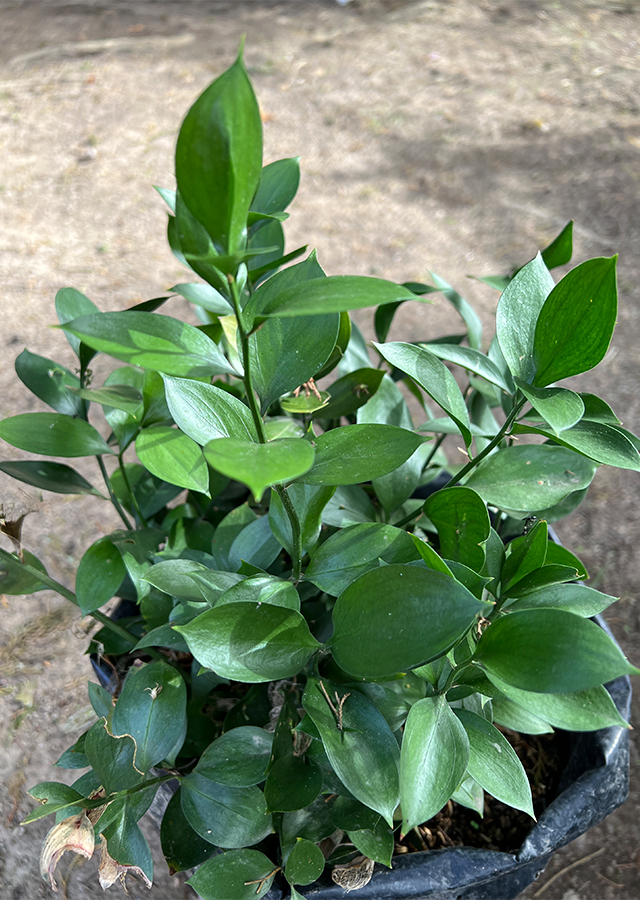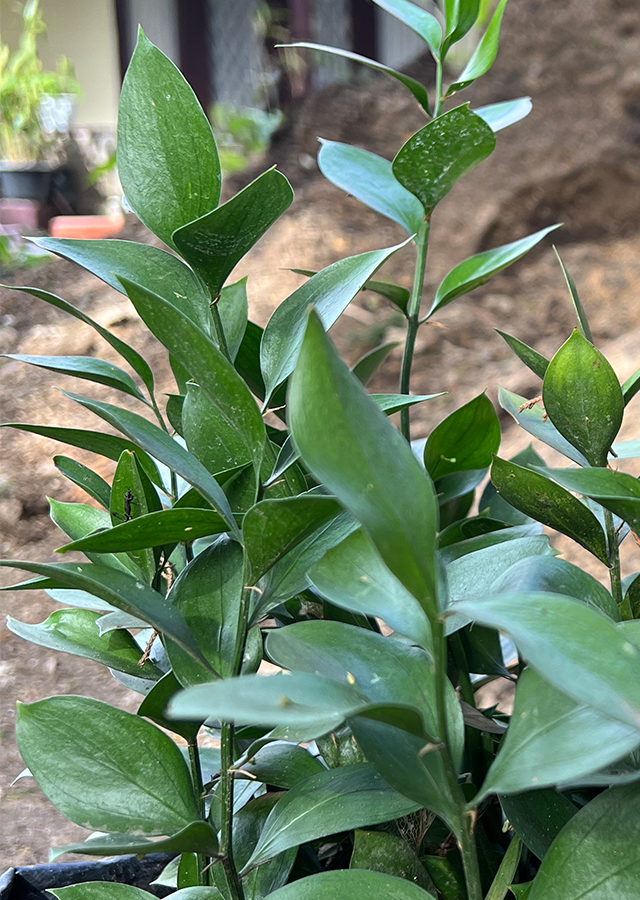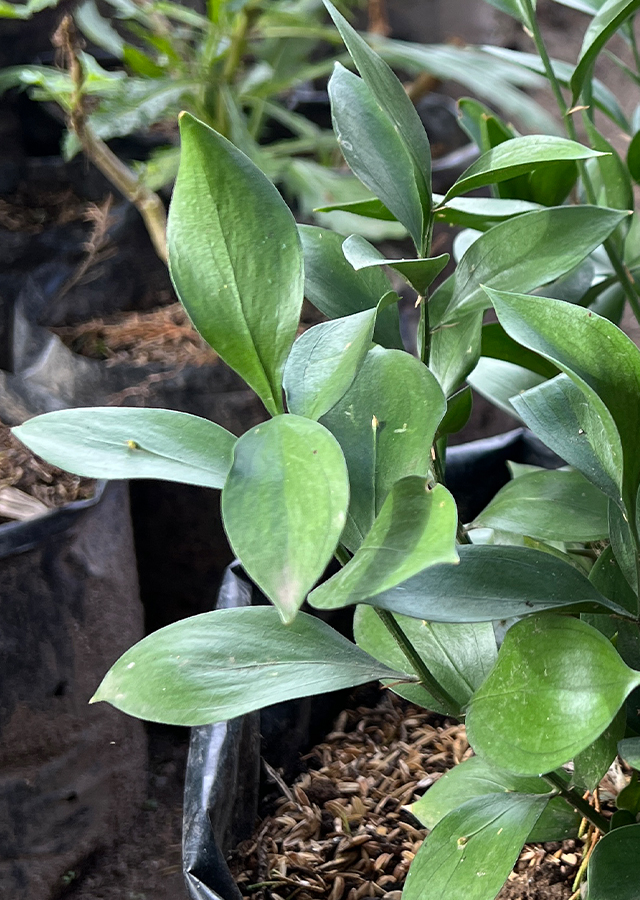Spineless Butcher's Broom
Ruscus hypophyllum L.
Asparagaceae
Location in our garden
Principal



Synonym
Platyruscus hypophyllum (L.) A.P.Khokhr. & V.N.Tikhom.
Ruscus lugubris Salisb.
Ruscus trifoliatus Mill.
Habitus
Shrubs. An erect perennial undershrub, 45-55 cm tall.
Part Used
Rhizome
Growing Requirements
Full Sunshine
Drought Resistant
Habitat
Terrestrial
Overview
Ruscus hypophyllum is native to East and South Spain, South-East Sicilia, and North-West Africa, and introduced into Canary Island, Ethiopia, France, Greece, Kriti, Libya, and Turkey. Commonly cultivated throughout the country for its evergreen foliage and resistance to drought.
Vernacular Names
Fragon (French), Sumbulteber (Turkish).
Agroecology
Prefers clay, rich in nitrogen and with a C/N ratio higher than 10, with soil of acidic pH (3.3-7.3). In Kroumirie, the presence of Ruscus hypophyllum is rarely above 650 m, between 50 and 650 m, with a maximum of about 450 m. This species has an affinity for low slopes (0-10%). The planting medium is a mixture of soil and humus with a ratio of 2:1. This plant is also resistant to seasonal changes, resistant to rainy and dry seasons. Resistant to drought.
Morphology
- Stem - simple, finely ribbed. Cladodes 25-35 (-60) x 50-60 (-80) mm.
- Leaves - the lower opposite or whorled, the upper alternate; elliptic to oblong-lanceolate, narrowed at the base, apically acuminate. Scale leaves 13 mm long, lanceolate.
- Flowers - white to pale blue, in clusters on the cladodes; bracts lanceolate, scaly. Pedicels c. 7 mm long. Perianth segments c. 5 mm long, oblong, obtuse, the inner subacute.
- Fruit - berry, 8-10 mm in diameter, red, 2-seeded.
Cultivation
R. hypophyllum is propagated using seeds, cuttings and rhizome separation. Ruscus can also be propagated using tissue culture techniques.
Chemical Constituents
Steroidal glycosides, saponins.
Traditional Medicinal Uses
- In Palestine, the rhizome extract is used to treat skin diseases.
- In Central Italy, it is used in the treatment of warts and hives. In some area, it is also used to treat diarrhea.
- In Turkey, a decoction of rhizome is drunk to treat eczema, kidney stones and nephritis.
Part Used
Reference Sources
- GBIF. (No date). Ruscus hypophyllum L. https://www.gbif.org/species/2769757. 17-06-2022.
- Kew Royal Botanic Gardens. (No date). Plants of the World Online: Ruscus hypophyllum L. https://powo.science.kew.org/taxon/urn:lsid:ipni.org:names:540453-1. 17-06-2022.
- Mimaki ,Y., Aoki,T., Jitsuno, M., Kilic, C.S., and Coskun, M. (2008). Steroidal glycosides from the rhizomes of Ruscus hypophyllum. Phytochemistry; 69(3): 729–737.
- Mimaki Y, Aoki T, Jitsuno M, Yokosuka A, Kilic CS, Coskun M. (2008). Steroidal saponins from the rhizomes of Ruscus hypophyllum. Nat Prod Commun; 3: 1671–1678.
- National Museum of Natural History. (No date). Ruscus hypophyllum L. https://eol.org/pages/1082041/articles. 17-06-2022.
- Nouri, J., Foued, A., Houcine, S., and Abbees, C. (2021). Characterization of the central and marginal ecological habitat of a rare medicinal species in Tunisia: Case of Ruscus hypophyllum L. International Journal of Phytology Reseach, vol.1(1) :22-26. Also availabale: https://www.researchgate.net/publication/354375045_Characterization_of_the_central_and_marginal_ecological_habitat_of_a_rare_medicinal_species_in_Tunisia_Case_of_Ruscus_hypophyllum_L.

